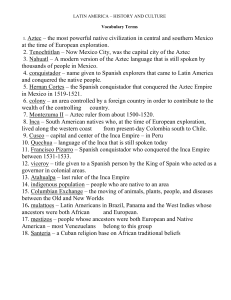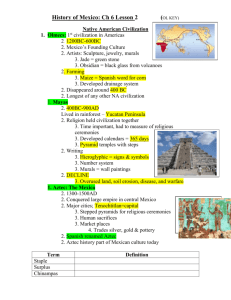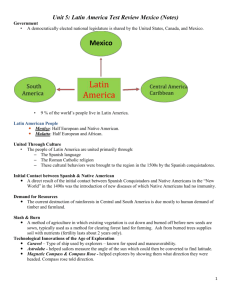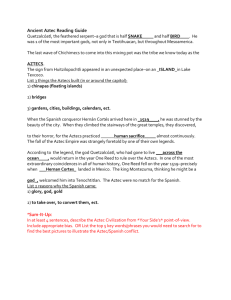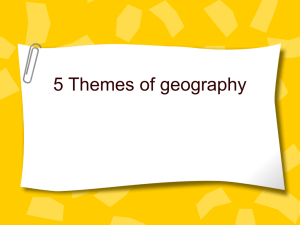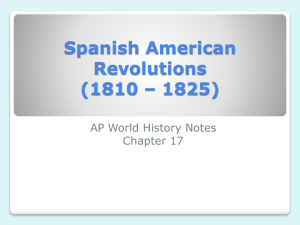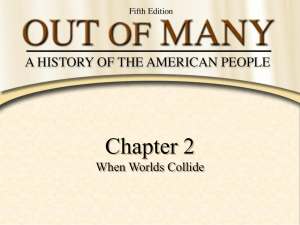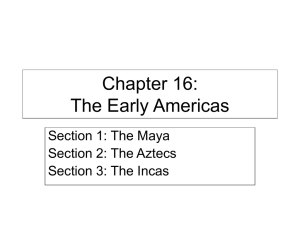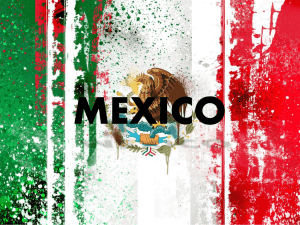A Brief History of Latin America Ancient Civs., Europeans, and
advertisement
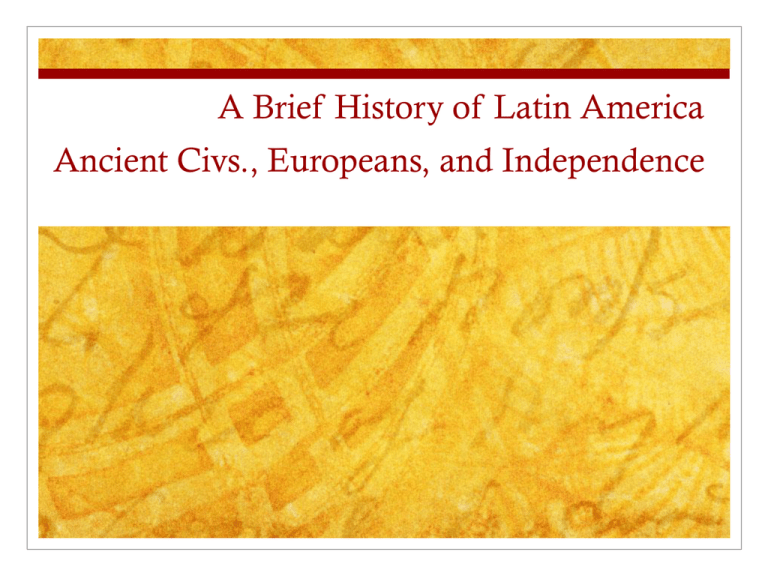
A Brief History of Latin America Ancient Civs., Europeans, and Independence Once Upon a Time (before Christopher Colombus) Three Native American empires in present-day Latin America Maya Inca Aztec Maya Dominated Southern Mexico & northern Central America AD 250-800 City of Tikal: present-day Guatemala Greatest Mayan city Priests and nobles ruled Skilled in mathematics Calendars (end of the world, 2012??????) Predicted solar eclipses using astronomical obs. Glyphs: picture writings carved in stone to honor deities & record their history POLYTHEISTIC society: Belief in multiple gods So, What Happened? Abandoned cities for unknown reasons Ideas of collapse: drought, warfare led to sharp decline in pop. Spanish took over in 1500s Now: archeologists are studying this area Uncovered ruins of roughly 40 cities Glyphs, however, remain largely untranslated Temple ruins = popular tourist attractions Today: descendants live in S. Mexico, n. Central America, practice subsistence farming Subsistence farming: producing just enough food for a family or village to survive (not for profit) Chichen Itza: Maya temple Aztec Central Mexico, 1300s Capital: Tenochtitlan (present day Mexico City) Aztec farmers grew crops on chinampas, or floating islands made from large rafts covered with mud from the lake bottom Structured class system Headed by emperor & military officials Priests: performed rituals to win deities’ favor & ensure good harvests Majority at the bottom: farmers, laborers, and soldiers Maize (eventually corn), tomato, xocoatl (chocolate) Defeated by Hernan Cortes (1521), beginning of Spanish Mexico The Aztec performed sacrifices to the Sun God, Huitzilopochtli,each day. The “sacrificed” were mainly prisoners Inca Also around 1440s Andes Mountains (South America) Ecuador to central Chile Capital: Cuzco (Peru) Ruled through central government headed by an emperor Built massive temples, fortresses, system of roads, irrigation systems All roads went through the capital city of Cuzco! Domesticated the alpaca & llama, used for wool No written language, used oral storytelling System of record-keeping: quipu, or a series of knotted cords of different colors & lengths; each knot represented a different item or number Conquered by Francisco Pizarro (1535) Original Incan road Machu Picchu Invasion of the Europeans! Spanish & Portuguese began colonizing after Christopher Colombus’ discovery of the “New World” God—spread Christianity throughout new areas Glory—competition among European countries Gold—riches!! European colonies eventually arose Hernan Cortes (1521): Aztecs Francisco Pizarro (1535): Inca Both men were CONQUISTADORS: conquerors Brought with them diseases; as this killed Natives, Africans were transported to the area to cover labor shortage Characteristics of European Colonies Spanish: highly-structured political systems under royally appointed officials (also known as a viceroy) Spanish + Portuguese colonies = Roman Catholic Church conversion of natives to Catholicism Hospitals & schools set up by missionaries Ecomomies Natural resources (Spanish: gold & silver mining; Portuguese: metals made into Brazilwood) Cities & towns built, served as trade centers & government seats Native Americans used to work in plantations & ranches. Eventually replaced by African slaves Colombian Exchange Independence Movements Began in the late 1700s because resentment against European rule was building Wealthy European colonists wanted self-rule, lower-class wanted more rights Native Americans & African slaves wanted freedom Revolutions in the US (American Revolution! Yay America!) and France (with Napoleon) inspired them Napoleon defeating Spain Spain weaker VIVA LA REVOLUCION!!! Latin American Revolutions Sources of DiscontentLate 1700s 1. Viceroys- Spanish governors 2. Peninsulares- Spaniards living in LA 3. Creoles- straight Euro. descent 4. Mestizos- Native + Euro. 5. Mulattoes- Afn. + Euro. 6. Zambos- Native + Afn. 7. Amerindians- Natives ALL distrusted one another Haiti’s Struggle French-ruled Sugar & coffee plantations = 1/2 million slaves lots of $ for France 25,000 free (but not equal) mulattoes Haiti’s Struggle Revolted in 1791 Led by Toussaint L’Ouverture Former slave, but educated 1804: Complete independence Haiti became the FIRST country to abolish slavery in the western hemisphere Mexico’s Fight Father Hidalgo: El Grito de Dolores 1810: cry for independence encouraged lower class (mestizos) to fight for indep. and more rights Hidalgo was executed Fr. Jose Morelos led fight (later executed) Creoles (pure Span. descent) against rebels at 1st 1820: new govn’t in Spain scared Creoles fought with rebels won in 1821 Set up monarchy 1st, later a republic long road to stability… Simón Bolívar 1810: Bolivar led revolt in Venezuela form republic Went on to Ecuador, Peru, & Bolivia republics Joined Jose de San Martin Leader in Argentina & Chile Wars ended in 1824 Tried to unite lands into Gran Colombia Biggest problem: Power struggles caused huge civil wars turn to military Panama Canal Isthmus perfect place to connect oceans Ferdinand de Lesseps (Suez Canal) tried but failed Disease, geography, $ Bunau-Varilla asked US pres TR (1901) to aid building Panama Canal Panama was part of Colombia at time Col. refused to give up land Panamanians revolted, US helped them Panama gained independence (1903) Canal began in 1904, until 1914 US owned until 1999 Dictatorships: Pattern As the countries fought for indep., power went to new people European & indigenous hist. stressed rank & privilege So ppl of power and strength were natural fit Enter the era of CAUDILLOS (dictators) Dictatorships People are unhappy REVOLT Option A: the military puts out revolt and resumes power to keep order Option B: rebels win & put in someone military/wealthy don’t like military coup Dictatorships Chile Military coup over threw dem. socialist govn’t in 1973 Led by Augusto Pinochet Ruled harshly, human rights violations Over 100,000 either killed, imprisoned, or tortured Ruled until 1990! (remained in charge of army) Died in 2006 while awaiting trial Cuba Fidel Raul Like others, ppl were discontent with govn’t Cuba- gap b/w rich and poor Revolution led by Fidel Castro set up Communist State with military dictator (1959) Ruled until 06-08 left Raul (brother) in power Change Venezuela: Coups lasted into 90s, one even by current leftist Pres. Chavez Electorate voted him in b/c he was a strong ruler in a time a of crisis 2012: re-elected again! Mexico: Mid-90s gave rise to Zapatista rebels Fight for indigenous rights spreads 2000 marked PAN take over (Vicente Fox) Felipe Calderoncurrent

